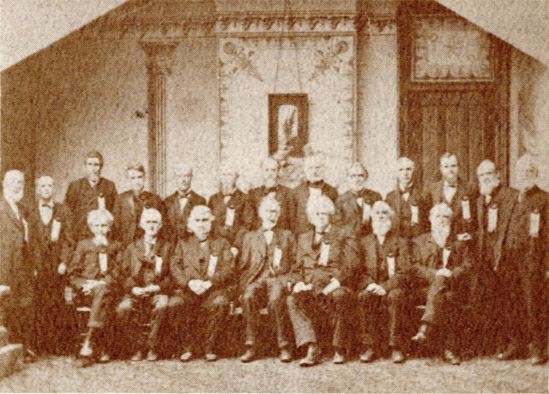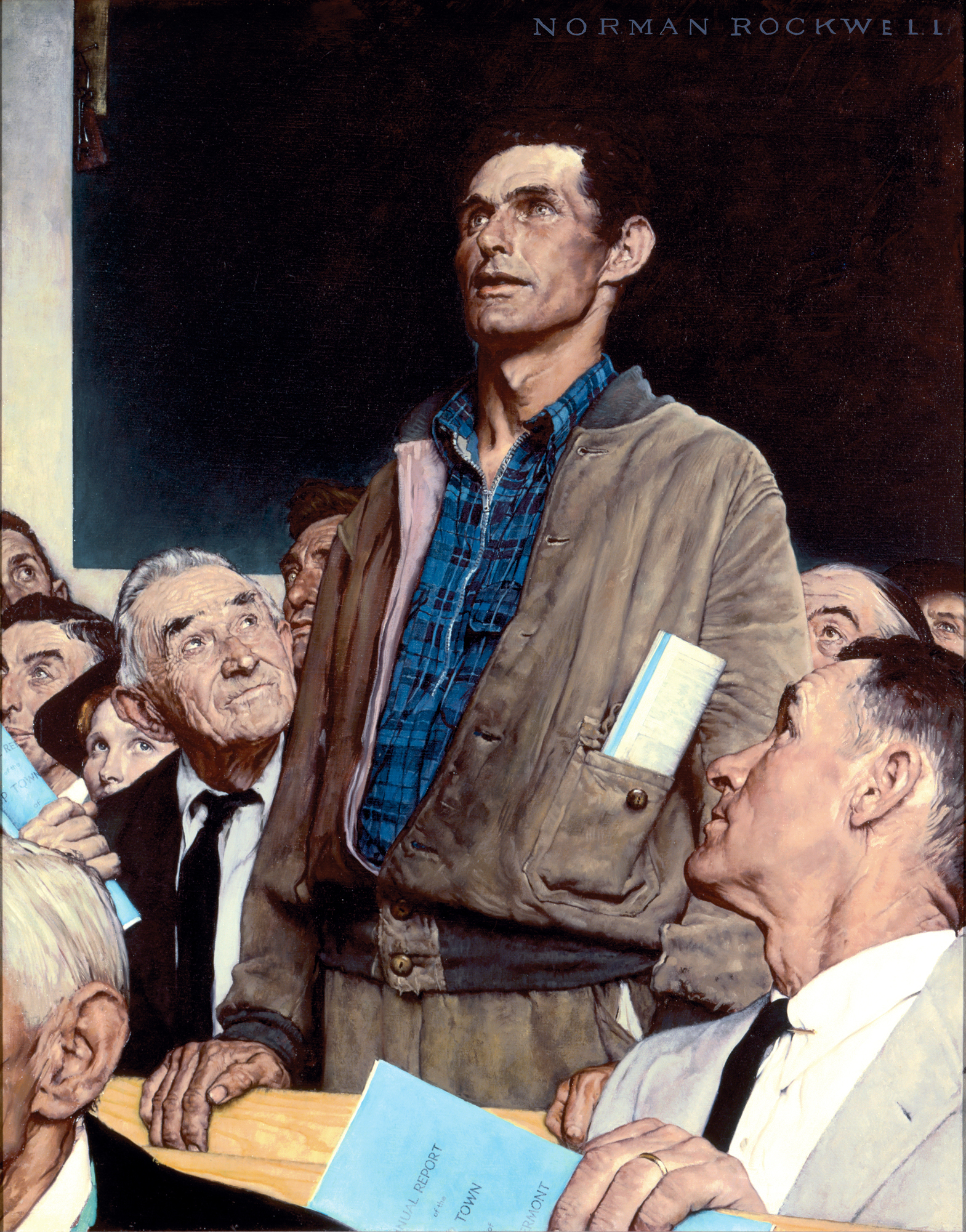The Iowa State Constitutional Convention Clearinghouse
This website provides news, pro & con, historical, and other information related to Iowa’s constitutionally mandated November 3, 2020 referendum on whether to call a state constitutional convention.
Introduction: Iowa’s Constitutions and Constitutional Conventions
Iowa has had two pre-statehood and two post-statehood constitutions. The first pre-statehood constitution was passed by Congress in 1836 when Iowa was part of the Territory of Wisconsin. The second pre-statehood constitution was passed by Congress in 1838 when Iowa became its own separate territory. Congress amended these “organic acts” multiple times.
Iowa’s first statehood constitution was proposed by a constitutional convention and then ratified by voters in 1846. Its second statehood constitution was proposed by a constitutional convention and then ratified by voters in 1857. This is Iowa’s current constitution.
Since Iowa became a territory in 1836, it has had four constitutions, called four constitutional conventions, and convened three constitutional conventions. In 1920, Iowa voters approved a constitutional convention, but the legislature refused to convene it, with some legislators saying that the people had been “hoodwinked” into calling it. Both in 1900 and 1970, projected election results at the end of Election Day indicated that the voters had approved a convention call, only to have the apparent call reversed in subsequent days after all votes had been found and tallied. The 1900 count, discussed on its own web page and in an op-ed, may have been the victim of recount shenanigans by a canvassing board that didn’t want to call a convention.
A question on whether to call a constitutional convention may be placed on the ballot either by the legislature or as a result of Iowa’s mandatory decennial referendum on whether to call a constitutional convention. The legislature has not placed the question on the ballot since 1857. Prior to 1857, when the legislature wanted to amend the constitution, calling a constitutional convention was the only way it could do so.
Prior to statehood, Iowa’s Legislature twice placed a referendum on the ballot to call a convention that voters refused. After voters duly called a convention and then refused to pass its proposed statehood constitution, the Legislature resubmitted the same Constitution to the people without bothering to either call or convene a convention. The people then rejected the Constitution once again.
Iowa’s 1857 and current constitution was passed after voters had the opportunity to 1) vote on whether to call a convention, 2) elect delegates to a convention, and 3) vote on whether to ratify the convention’s multiple proposals. Iowa’s 1857 Constitution was the only one of its four constitutions where Iowa voters were granted those three votes. The 1857 Constitution mandates that any future Iowa constitutional convention, whether initiated by the Legislature or decennial periodic referendum, implements that three vote process.
Iowa held a fourth state constitutional convention in 1933 to repeal the 21st Amendment of the U.S. Constitution. But that was a state constitutional convention held under Article V of the U.S. Constitution, not Iowa’s Constitution, so is excluded from this discussion. It is noteworthy, however, that Congress chose the state constitutional convention ratification process, not the usual state legislature ratification process, because it believed the legislature would have a conflict of interest representing all Iowans on the repeal issue, as the legislature was not apportioned based on one-person, one-vote.

Photo of delegates to Iowa’s 1857 state constitutional convention.
Iowa Constitutions Since 1836
Constitutions*
Constitutions Rejected by Voters**
Legislature Bypasses the Standard Convention Process in Passing a New Constitution ***
* Two pre-statehood constitutions and two post-statehood constitutions.
** Both in 1845.
*** In 1845, the Legislature resubmitted for voter ratification a convention proposed constitution that voters had already rejected but that the Legislature very much wanted the voters to ratify. Voters once again rejected the proposed constitution. This failed method of proposing a constitution may be unique in American state constitutional history since 1776–perhaps because it arguably violated Iowa’s existing constitution. If not unique, the method has been exceptionally rare.
In 1846, the Legislature passed legislation to convene a convention without first seeking voter approval for the convention call. That is, unlike 1844, it called a convention but still skipped the step of voter approval for the convention call. This method was uncommon prior to the 20th Century and has become very rare since.
Iowa Constitutional Conventions Since 1836
Conventions Convened*
Conventions Called by Voters****
Conventions Initiated by the Legislature**
Conventions Calls the Legislature Refused to Honor*****
Legislature Convention Calls Rejected by Voters***
Rejected Convention Calls Initially Reported As Approved******
* 1844, 1846, 1857.
** All five were prior to the advent of the periodic constitutional convention referendum, first implemented in 1870. The five were in 1840, 1842, 1844, 1846, and 1855.
*** Voters rejected two of the Legislature’s five calls. The rejections were in 1840 and 1842.
**** 1844, 1857, and 1920. 1900 is a special case, as the tally may have been influenced by recount shenanigans. See Snider, J.H., 3 things Iowans should consider about constitutional convention referendum, Iowa City Press-Citizen, September 21, 2020. Note that in 1846 the Legislature called a convention without bothering to get an approval vote by voters.
***** In 1920, a convention call was unambiguously approved that the Legislature refused to convene in compliance with the Constitution after playing a sophisticated blame game. The House and Senate each passed the required legislation to convene a convention, then blamed the other branch when they didn’t agree on a compromise version of the legislation in conference committee. Again, 1900 is a special case, as the tally may have been influenced by recount shenanigans. See Snider, J.H., 3 things Iowans should consider about constitutional convention referendum, Iowa City Press-Citizen, September 21, 2020.
****** In 1900 and 1970. The final vote count in 1900 was 49.92% against, and 50.08% for–what given our modern (post Gore v. Bush) understanding of historically imprecise voting technology would be understood to be a statistical dead heat.
Yes Vote on the Constitutional Convention Referendum
(Average Percentage Voting Yes Over Thirty Year Periods; the top three peak periods are 1840-1860, 1900 to 1920, and 1960-1980)
- 1840-1860 48.52%
- 1870-1890 27.84%
- 1900-1920 50.18%
- 1930-1950 39.63%
- 1960-1980 44.81%
- 1990-2010 30.88%
Iowa Constitutional Timeline
Organic Act (“Constitution”) for the Wisconsin Territory, from July 3, 1836
Organic Act (“Constitution”) for the Iowa Territory, from July 4, 1838
First Statehood Constitution, from December 28, 1846
Second Statehood Constitution, from August 3, 1857
Search This Website

